L: Lead Yourself
Discovering the Value of Self-Awareness
Now that you have learned about your individual AthleteDISC Profile, let's build on those foundations as we start to apply DISC to sport. This page will help you dive deeper into understanding the DISC Model and each of the four primary styles to uncover the similarities and differences to continue to further enhance your self-awareness.
Understanding the DISC Model
DISC measures the degree of Dominance, Influence, Steadiness, and Conscientious behavior. Everyone has their unique level of each behavioral style in the context of their role. The four-quadrant model explains the behavior of people with high degrees of D, I, S, and C. We will also look at how these behaviors combine as we move along.
Pace and Directness
Here’s how to identify behaviors in others based on their pace and level of directness.
Direct/Faster-Paced Behaviors
Frequently uses gestures and voice intonation to emphasize points, more likely to introduce self to others, frequent contributor in groups, less patient, expresses opinions readily, sustained eye contact.
Indirect/Slower-Paced Behaviors
Infrequent contributor in groups, reserves expression of opinions, more patient and cooperative, more likely to wait for others to introduce them, often makes qualified statements, infrequent use of gestures and little change in voice intonation.
Orientation and Openness
Look for these behaviors when working with others to determine their level of openness and focus.
Guarded/Task-Orientated Behaviors
Keeps feelings private, limited range of facial expressions, more formal and proper, avoids/minimizes physical contact, conversation stays on subject, speaks in specifics: cites facts and examples, goes with an agenda.
Open/People-Orientated Behaviors
Shows feelings and enthusiasm freely, more relaxed and warm, conversation includes digression, easy to get to know, initiates/accepts physical contact.
Watch the video below to learn more about the DISC Model:
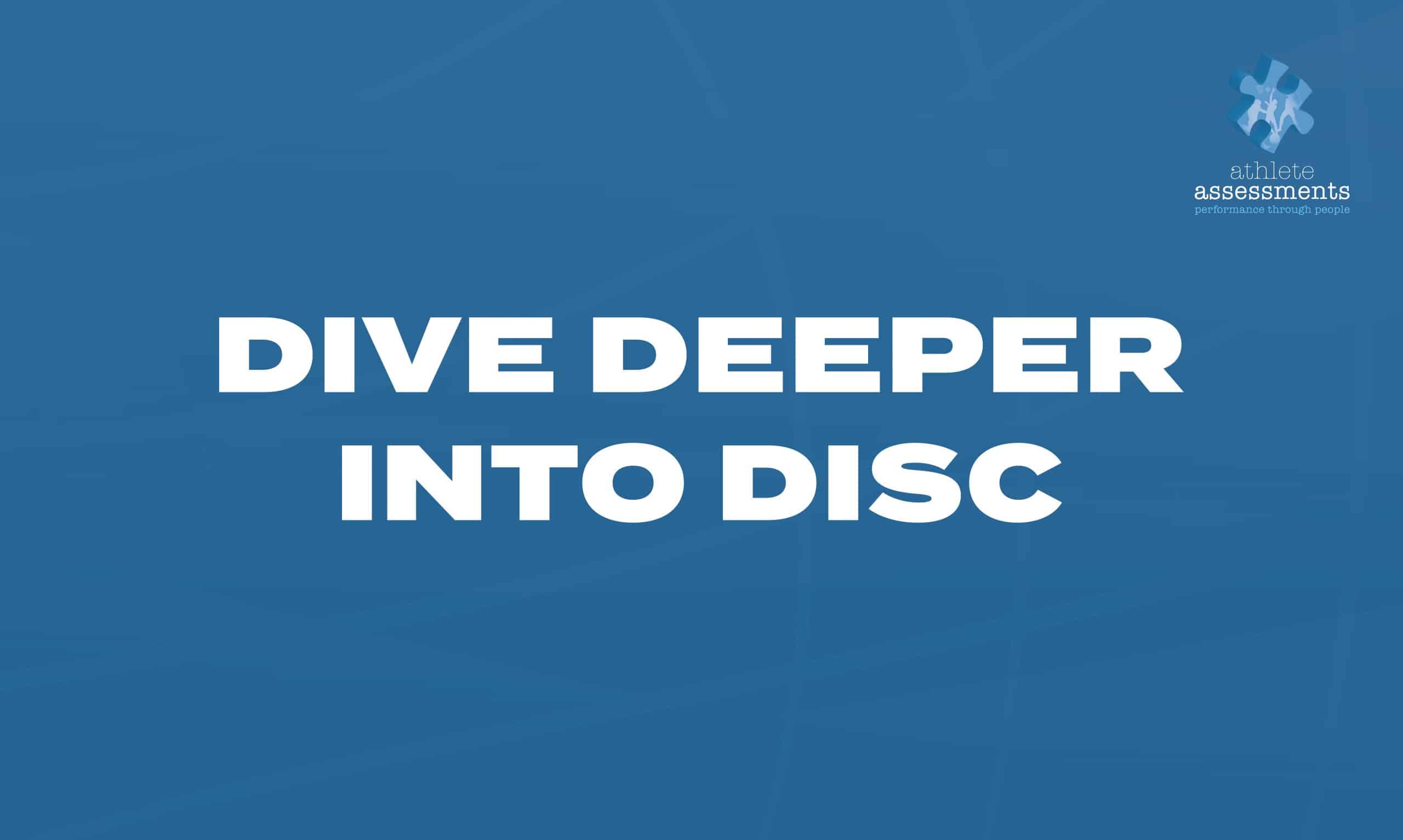
Quick Recap
Faster-paced and more direct behavior coupled with a goal orientation and guarded manner will indicate a likely Dominance or ‘D’ Style.
Faster-paced and more direct behavior coupled with a people orientation and open manner will indicate a likely Influence or ‘I’ Style.
Slower-paced and less direct behavior coupled with a people orientation and open manner will indicate a likely Steady or ‘S’ Style.
Slower-paced and less direct behavior coupled with a task orientation and guarded manner will indicate a likely Conscientious or ‘C’ Style.
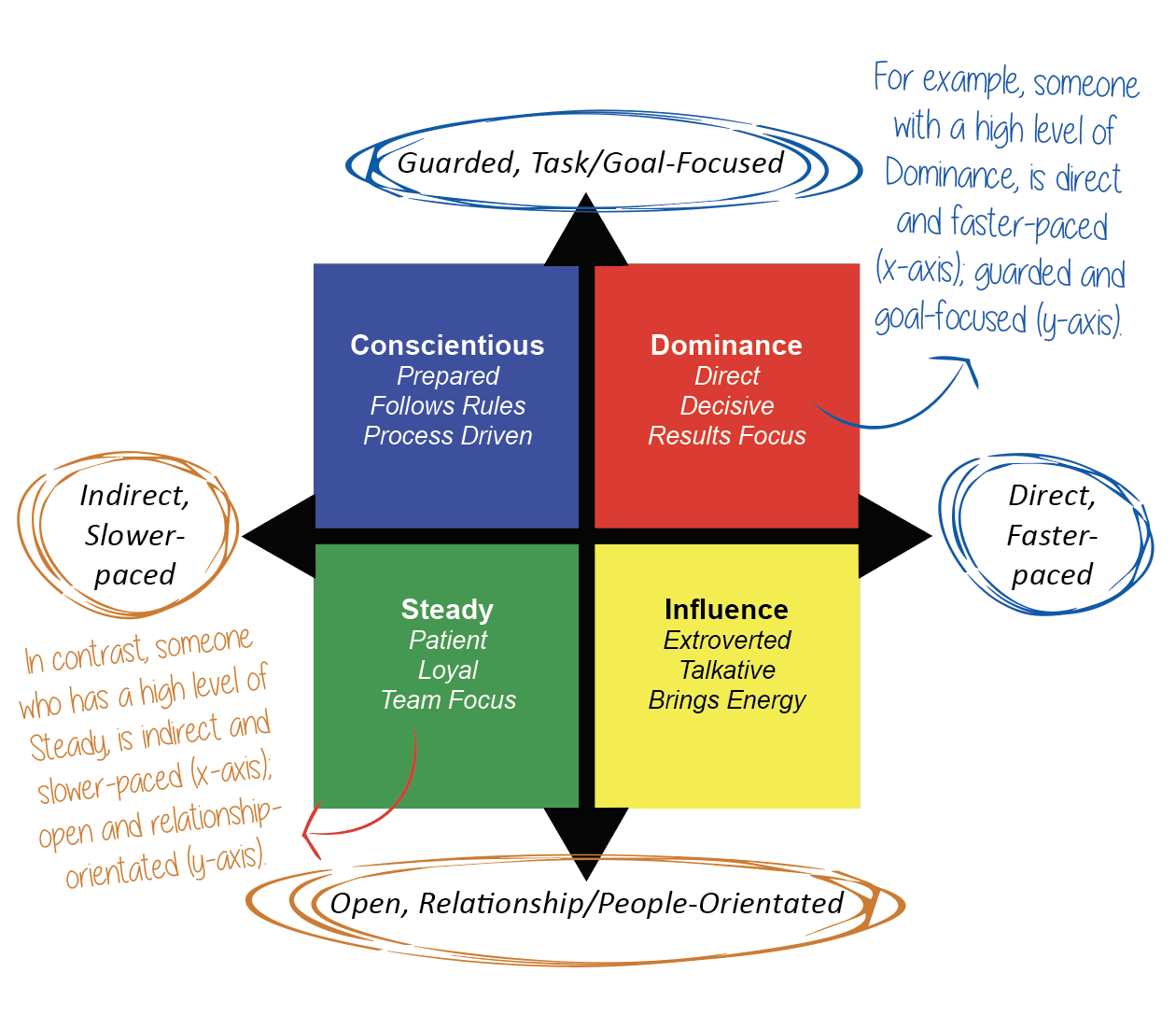
LEADING YOURSELF
Leadership effectiveness begins with self-awareness, which involves understanding your strengths, limitations, emotions, and how to perform at your best. The most successful individuals know themselves well and continue to develop this awareness over time.
Self-aware leaders excel because they are adaptable, adjusting their behavior to suit diverse situations, team members, and moods. They build strong relationships by understanding and connecting with others, bringing energy when needed or remaining composed under pressure.
Developing self-awareness requires effort and practice, similar to honing skills in sport. Tools like the AthleteDISC Profile can accelerate this process, offering insights to improve performance and relationships. Familiarizing yourself with the DISC model can help you better understand both yourself and others.
Watch the video below to learn more about leading yourself:
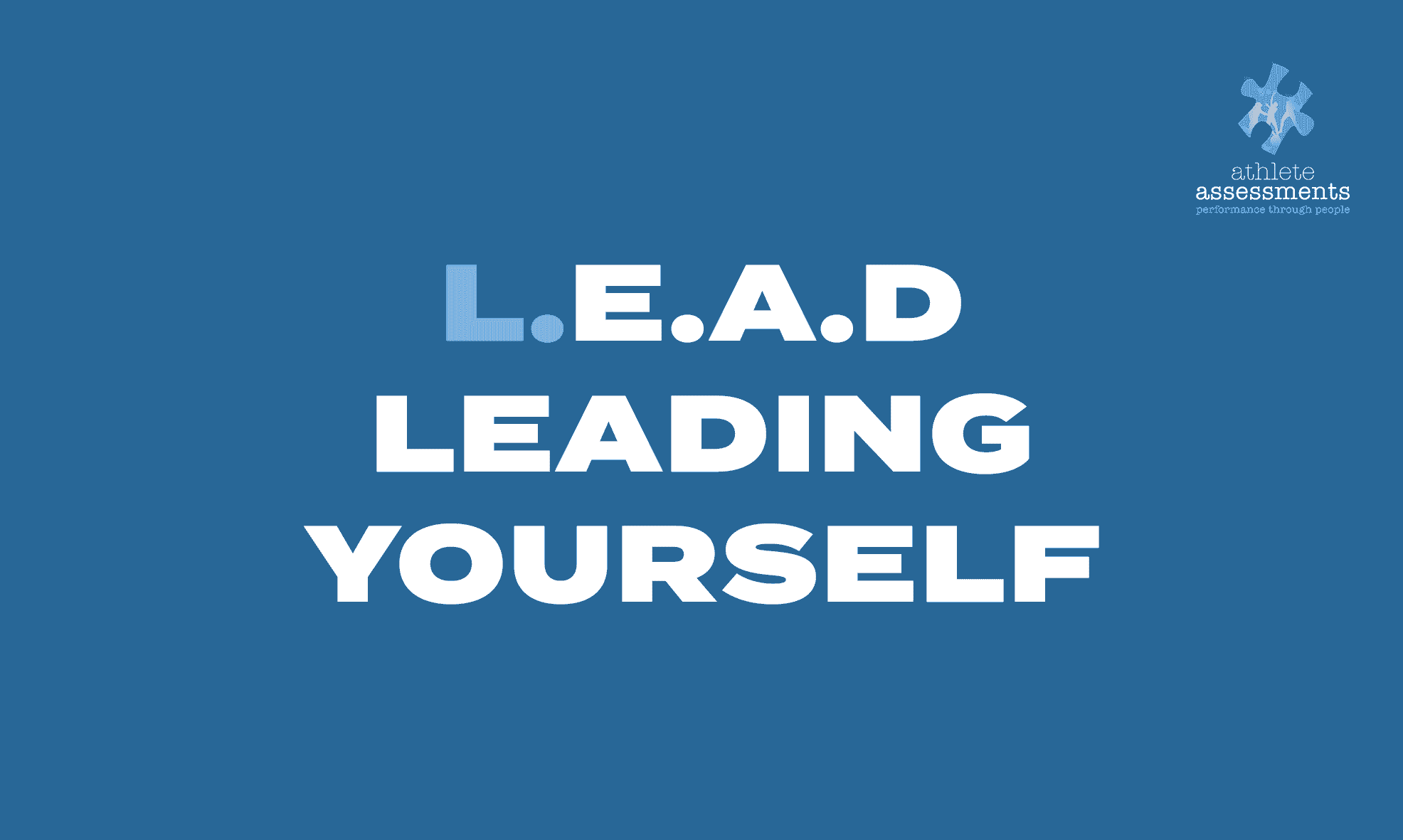
five FACTS you need to know
about DISC to be an expert
DISC focuses on behavior, how someone prefers to act and what they do, rather than personality traits. Behavior is flexible, personality is not. We never ask an athlete to change their personality, but coaches constantly ask athletes to adjust their technique or what they do.
At its core, DISC is a simple four-quadrant model. This is critical in sport as it allows coaches and athletes to quickly understand, remember, and use. You can also delve much deeper into its theory and application to truly master this area of expertise. (Personality tests, such as MBTI, are psychometric assessments, are more complex and require extensive training to administer and work with. Also most are developed for a business context only, not sport.)
There is no right or wrong, best or worst DISC Profile. We have profiled many of the world’s best and see no pattern for who is more or less successful based on their DISC style.
Your aim is never to ‘improve’ your DISC Profile. Instead, the focus is on developing self-awareness, knowing what works for you and what doesn’t, and ultimately increasing the choices of behavior to what is most effective to the situation and those you work with. This is key to high performance and leadership.
DISC was first developed in the 1920’s and because it was never copyrighted, it has been continually developed, extended, and improved on since. As a result, DISC is the most valid and reliable tool available..
THE SBR MODEL
Life is full of diverse interactions, and success depends on understanding how to adapt behavior to different situations to achieve effective results. The Situation x Behavior = Result model emphasizes:
- Assessing the Situation
- Choosing the appropriate Behavior
- Evaluating the Result to learn and improve future interactions.
Using the DISC Profile, individuals can understand their preferred behaviors, which may work well in some situations but not in others. Awareness through DISC enables more thoughtful behavioral choices, leading to better outcomes and continuous improvement.
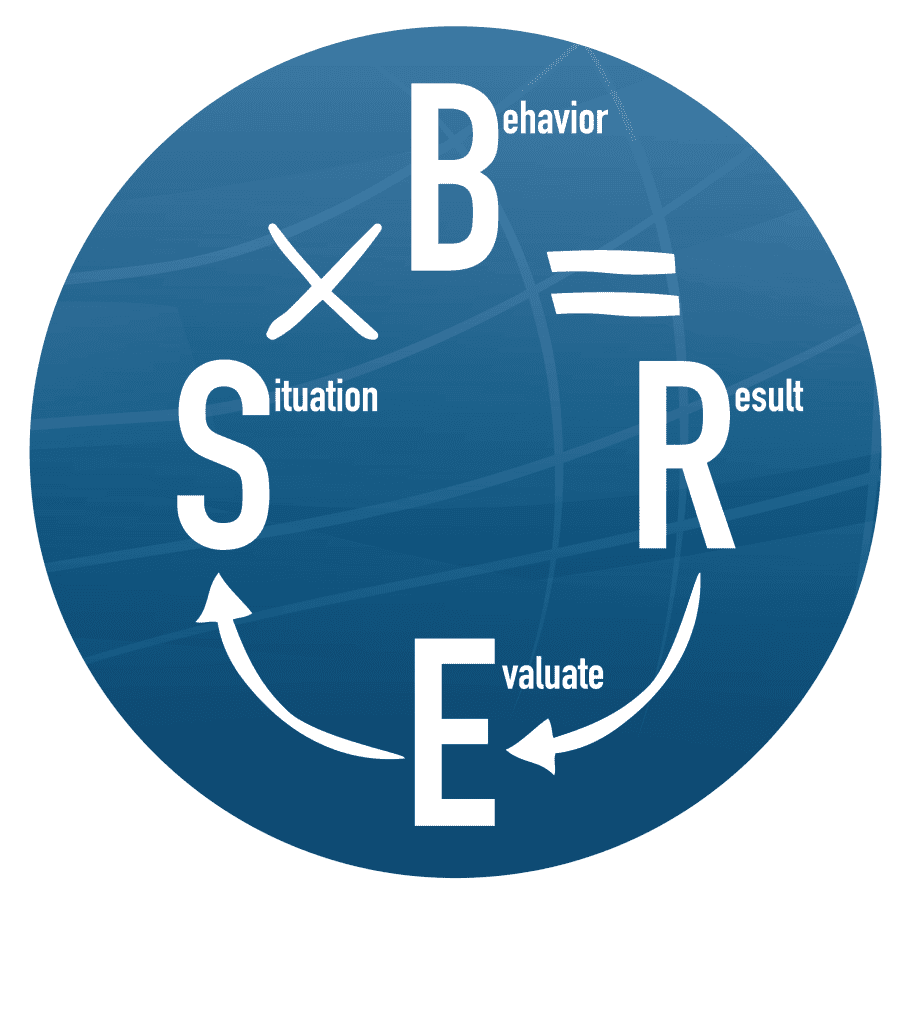
Watch the video below to learn more about the SBR Model:
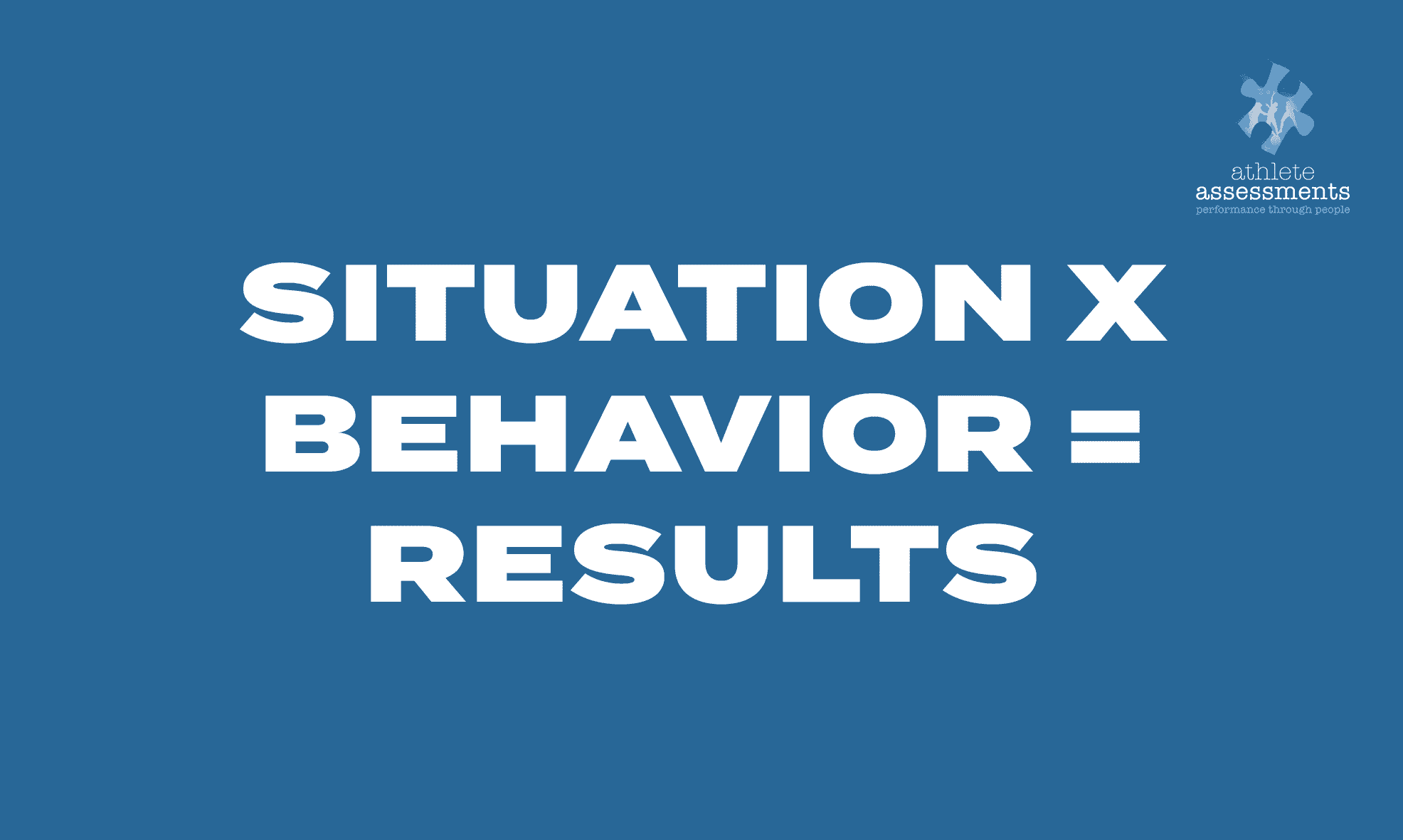
ACTIVITY: THE SBR MODEL
Refer to page 24 for this activity.
- Write down three situations student-athlete leaders regularly encounter. For example: giving constructive feedback to a team member
- What Behavior is required in these three unique situations in order to achieve a productive result?
- In each example, what Result are you looking to achieve?
- Evaluate and discuss your examples with others to compare Situations and Behaviors.
YOUR DISC PROFILE
5 Tips for Getting the Most Out of Your DISC Profile
Share your DISC Profile with your coach and team members. This builds understanding and shows you value them.
Refer to your DISC Profile Report. Learn more about DISC and Leadership Styles. Try to identify the behaviors of your team members.
Use your workbook in its entirety. Build your “Leadership Muscle” by practicing different styles of leadership.
Take notes about how you lead within your team or squad. Become conscious of when you are leading in line with your DISC Profile and when you make adaptations.
Use the 360⁰ Observer capability to give valuable feedback on how your coach and team see you in your leadership role.
ACTIVITY: YOUR DISC PROFILE
Refer to page 26 for this activity.
As you read over your own DISC Profile Report, fill in the Summary Page (Page 13) with the key things you identify within each section of your Report.
- Your Most Preferred Behaviors
- Your Behavioral Style Tendencies
- Your Motivations (Wants)
- Your Needs
- Ideal Sporting Environments
- Key Points when Under Stress
- Communication Tips for Others
- Potential Areas for Improvement
Refer to page 29 for rest of this activity.
Now that you have filled in the Summary Page, take a moment to describe your Leadership Style using what you learnt from your DISC Report.
ACTIVITY: DISC VOICEMAILS
Refer to page 30-31 for this activity.
What do you understand about communicating with the different DISC styles so far? Leave a voicemail message adapted to each DISC styles communication preferences.

Dee (Dominant)
“This is Dee, you’ve got 10 seconds. Go!”

Ian (Influence)
“Hi, Ian here! Hope you are having a great day! Leave your message and I look forward to speaking really soon.”

Sally (Steadiness)
“Hi, this is Sally. I am so sorry I can’t make it to the phone. Can you please leave your name and number. I hope you have a nice day.”

Conrad (Conscientious)
“Hi, you’ve reached Conrad. Please leave your name, number, time of call, why you’ve called and best contact time. I will return your call at my earliest convenience.”
BEHAVIOR VS. PERSONALITY
Is there any difference between Behavior and Personality?
Personality
- Reflects "who you are" and is relatively fixed.
- Influences behavior but cannot be easily changed.
- Personality tests often claim certain traits are better suited for sport or leadership, but there is no definitive pattern of success based on personality type.
- Tools like MBTI are complex and require training but do not offer greater validity or reliability than behavioral models like DISC.
Behavior
- Represents "what you do, how you act" and is flexible.
- Can be coached and adapted to fit different contexts, such as being more vocal on the field and relaxed off it.
- Leadership skills can be developed by increasing self-awareness and offering more behavioral choices to suit specific situations or people.
- Behavioral models like DISC are simple, practical, and easy to apply, making them highly effective in sports for both coaches and athletes.
THE HISORY OF DISC
Watch the video below to learn more about the history of DISC:
In the 1920s, psychologist William Moulton Marston developed the DISC theory to explain people’s emotional and behavioral responses, focusing on the behavior of “normal” individuals rather than those who were mentally ill or criminally insane. Marston, also known for creating Wonder Woman and inventing the lie detector, introduced the DISC model in his 1928 book The Emotions of Normal People.
DISC identifies four key behavioral factors: Dominance, Inducement, Submission, and Compliance. Marston’s findings highlighted that behavior is dynamic and situational, influenced by environmental factors. His groundbreaking work laid the foundation for today’s DISC profiling, recognized as a reliable tool for self-awareness and behavioral understanding.
Key Advancements and Applications
- DISC Profiles: The development of graphical profiles made DISC results easier to understand and apply without requiring extensive psychological expertise.
- Versatile Use: DISC has been adopted globally across various fields, including leadership, coaching, teamwork, and personal development. It has helped over 50 million people improve self-awareness and collaboration.
- In the Workplace: DISC enhances employee alignment, motivation, and communication, boosting efficiency and productivity. It is widely used for recruitment, leadership development, and team-building.
Why DISC Matters
By identifying unique styles of learning, communication, and leadership, DISC empowers individuals to:
- Leverage their strengths and address limitations.
- Understand others for better relationships and teamwork.
- Adapt behaviors to achieve greater success in personal and professional contexts.
With its practical applications and continued research, DISC remains a powerful tool for fostering growth and collaboration across diverse settings.
MORE ABOUT THE DISC MODEL
ACTIVITY: PICK A LEADER & TEAM MEMBER
Refer to page 39-41 for this activity.
Watch the videos below for a deeper explanation of the different DISC quadrant axes.
- Select a leader you feel fits the description of each DISC style and provide a brief explanation of why you chose that person.
- Now, choose a team member you feel fits the description of each DISC style and provide a brief explanation of why you chose that person.
Fast-Pace vs. Slow-Pace
Direct vs. Indirect
Task-Focus vs. People-Focus
Open vs Guarded
ACTIVITY: HOW TO COACH YOURSELF
Refer to page 58-59 for this activity.
Identify an area of your leadership to improve and set a goal that benefits both you and your team (e.g., enhancing positive communication). Use your DISC Profile Report to design a self-coaching strategy, imagining how you would coach yourself.
This exercise helps high-performance athletes and leaders understand their coaching needs, improving their coachability and assisting their coaches and managers in meeting those needs. It is also valuable for coaches and sports administrators to tailor their coaching approaches.
- How will I structure this goal for it to be meaningful to me?
- Why did I choose this goal?
- What are the payoffs for achieving this goal?
- How will I measure my success and know if I have achieved it?
- How will I give myself information about this goal?
- How will I structure my practice sessions to reflect the style of coaching I require?
- What feedback will I seek and from who, to know if I am on the right track to my outcomes?

